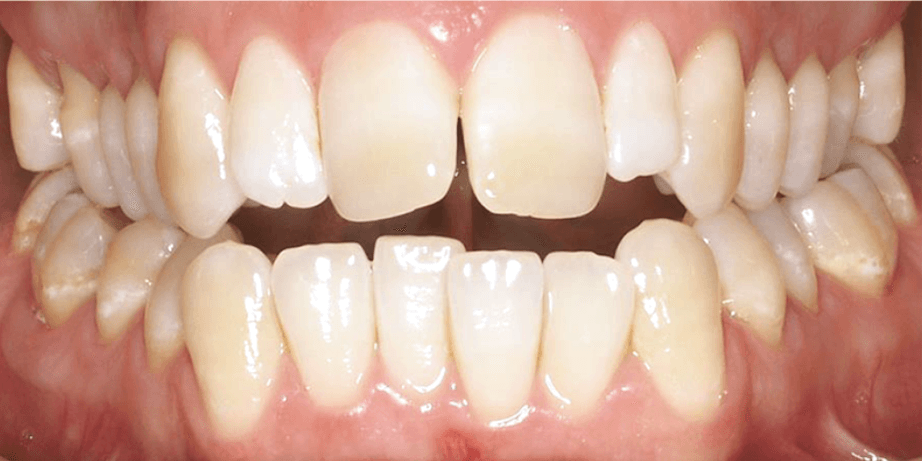A dental malocclusion is a condition in which the teeth do not fit together properly when the jaws are closed. This misalignment can affect both the function and appearance of the bite and can cause a variety of dental and health problems. Malocclusions can be caused by a variety of factors, including genetics, oral habits – such as thumb sucking, pacifiers or pushing teeth with the tongue – problems during dental development, premature loss of baby teeth, or trauma and injury.
What types of malocclusions are there?
- Crossbite: the upper and lower teeth do not align correctly transversely. It can affect both front and back teeth.
- Overbite or deep bite: the upper teeth overlap excessively over the lower teeth.
- Open bite: there is an open space between the upper and lower front teeth when the jaws are closed.
- Dental crowding: teeth do not have enough space in the jaw to align properly and overlap each other.
- Diastema or dental spaces: there are spaces or gaps between the teeth.
- Class II: the upper maxilla (the upper jaw) is advanced with respect to the lower jaw.
- Class III: the mandible is advanced with respect to the upper jaw.
If we do not treat dental malocclusions we can suffer consequences such as chewing problems, dental wear, pain and discomfort, speech problems and esthetic impact.
Treatment depends on the type and severity of the malocclusion – it is essential to consult an orthodontist for a proper evaluation and a personalized treatment plan.
Is invisible orthodontics functional for malocclusions?
Clear aligners have evolved since they were launched in 1999. In the early days of clear aligners, most specialists considered them an orthodontic appliance appropriate for the treatment of Class I cases with minor crowding that are resolved primarily with interproximal reduction. Today, clear aligners are made of a new plastic and make use of optimized attachments. The teeth are moved according to sophisticated computerized algorithms developed by software. There are several invisible aligner systems around the world and it is clear that it is the present and future of orthodontics.
It is important to understand that clear aligner treatment is a technique, not a product. There is a “misunderstanding” that clear aligners are an intermediate solution that can only perform minor tooth movements. However, today’s clear aligner system is a comprehensive orthodontic device, capable of treating a wide range of malocclusions.
It is essential that an orthodontist evaluate the individual case to determine if invisible orthodontics is appropriate. This usually involves a detailed clinical examination, x-rays and digital models of the teeth. Based on this evaluation, the orthodontist can create a customized treatment plan and determine the best option.
Does invisible orthodontics work for all malocclusions?
Invisible orthodontics for malocclusions can treat the simplest to the most complex case, most patients are suitable for treatment with Invisalign:
- Crowding and/or crooked teeth.
- Class II.
- Class III.
- Crossbite.
- Open bite.
- Deep bite.
- Diastemas or dental spaces.
Do not hesitate to contact our specialists to evaluate your case. At Janer&Herraiz we have orthodontists with more than 30 years of experience.



